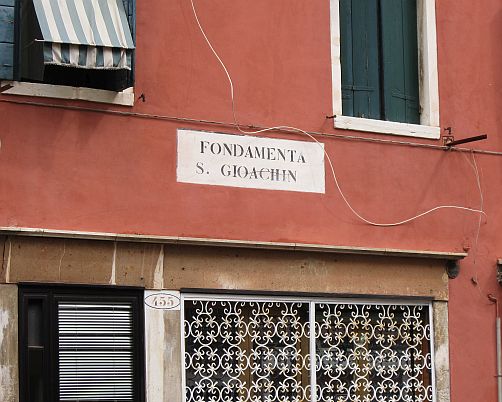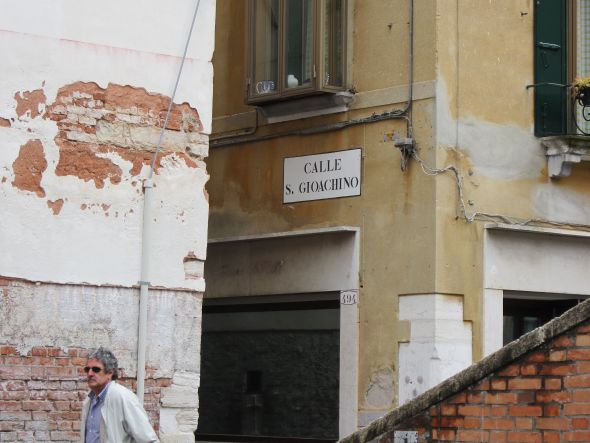A sharp-eyed reader who read my recent post on Carlo de Ghega has written to the “Comments” page with the following salient observation:
Gioachin Erla? The marvelous iMaps+ doesn’t help, but the index to my typical Venice map lists a Gioacchino S Fm at E9, and there it is, at what iMaps calls Fondamenta San Giovacchino. No wonder he’s “famous”.
Checking up on street spelling might be as good an excuse as any to plan a stroll around Ghega’s native heath, but I will help those who are farther away by giving evidence here of the spelling on the nizioleto.
For anyone coming in late to this epic, which is beginning to resemble Ben-Hur mixed with Michael Strogoff and 20,000 Leagues under the Sea, here is the link to the Preface, Backstory, Prequel, Dramatis Personae, Nihil Obstat, or whatever one wants to call it.



Which brings me to a dead end in the cartographic road, so to speak. Simply put, I cannot understand — and I’ve tried — why makers of Venice maps don’t write the street names to match what’s on the walls. It’s so sublimely idiotic that even my brain, which idiocytropic, refuses to deal with it. Where the matter of street-names-on-maps-differing-from-street-names-on-streets is concerned, my brain is like a cat examining a new product in its food dish, a product which even after a few minutes hasn’t yet inspired any urge to proceed. Sniffing, looking, and even licking haven’t produced any reaction at all. Perhaps I have overdone this metaphor. I haven’t really licked anything involving maps.
If anyone knows, or even imagines that he/she knows, or even has just a wild theory, as to why mapmakers publish street names which are not the same as the street signs in this extremely foreign country otherwise known as the most beautiful city in the world, I would be grateful to be told.
Then I could go back to looking and sniffing at other things.

2 Comments
Well if you think about it, who are the ones with the maps in Venice? Tourists. Guidebooks and travel websites are always telling people to go off the beaten path and “get lost” in Venice, perhaps the mapmakers and guidebooks are in cahoots? They want people to get lost and wander the city, so what better way than to confuse people with inaccurate maps? Or maybe they just know tourists will get lost regardless and just don’t want to make the effort on a lost cause?
I don’t believe there’s any thought process involved at all. That’s the trouble.